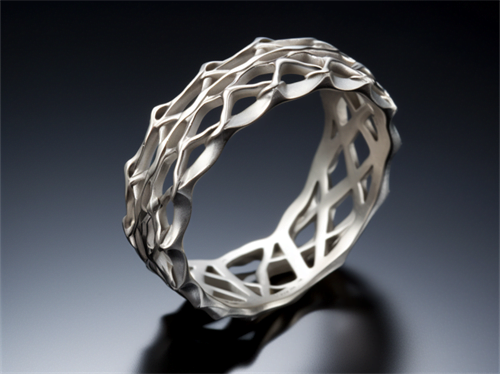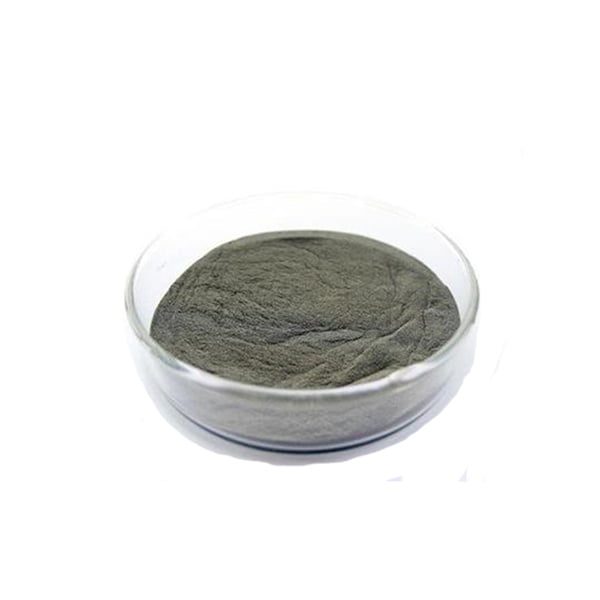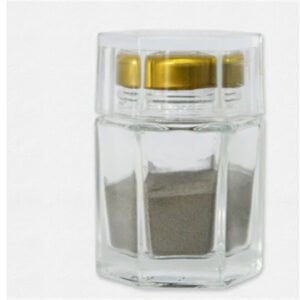Prášky z kovových slitin
Obsah
Prášky z kovových slitin umožňují výrobu vysoce výkonných dílů pomocí metod lisování a slinování práškové metalurgie nebo aditivní výroby v dopravě, průmyslu, zdravotnictví a energetice. Tento průvodce se zabývá různými možnostmi slitin, procesy výroby práškových materiálů, klíčovými specifikacemi, případy použití, úvahami o kvalitě a poradenstvím při získávání zdrojů.
Typy prášků z kovových slitin
Společné kategorie:
| Typ | Příklady | Klíčové vlastnosti |
|---|---|---|
| Slitiny niklu | Inconel, Monel, Hastelloy | Odolnost proti korozi, tepelná odolnost |
| Kobaltové slitiny | MP35N, Haynes 25, Stellite | Odolnost proti opotřebení, biokompatibilita |
| Titanové slitiny | Třída CP, Ti-6Al-4V, Ti-6Al-7Nb | Vysoká pevnost, nízká hmotnost |
| Nerezové oceli | 316, 17-4PH, 15-5PH | Odolnost proti korozi, pevnost |
| Nástrojové oceli | H13, M2, M4, P20 | Odolnost proti opotřebení, houževnatost |
| Slitiny mědi | Chrom měď, mosaz, bronz | Elektrická a tepelná vodivost |
Srovnejte vlastnosti slitinového materiálu s kritickými požadavky na výkonnost dílů, jako je tepelná tolerance, tvrdost, únavová životnost atd., a zvolte třídu prášku.

Způsoby výroby kovového prášku
Klíčové výrobní procesy v komerčním měřítku:
- Atomizace plynu - Vysokotlaký inertní plyn rozbíjí proud roztaveného kovu na jemné kapičky. Dosahuje sférických prášků s dobrými tokovými a balicími vlastnostmi. Různé trysky vytvářejí požadované rozsahy velikostí.
- Plazmová atomizace - Vysokoenergetický plazmový oblouk taví suroviny. Výkonné indukční cívky vytvářejí kapky, které tuhnou do sférických prášků s těsným rozložením částic.
- Rotační elektroda - Odstředivé síly působící na roztavenou slitinu vystavenou proudům inertního plynu způsobují rozpad na jemné kapičky, jejichž výsledkem je sférický prášek.
- Elektrolýza - Ionty kovů z roztoku se vylučují na katodách jako jemné práškové částice. Používá se pro reaktivní materiály, jako je hliník, hořčík, titan.
Řízení procesních parametrů, jako je teplota, atmosféra a rychlost chlazení, vede ke kvalitním práškovým surovinám pro výrobu dílů pomocí aditivní výroby nebo zhutňování práškové metalurgie.
Typické specifikace
| Parametr | Popis | Zkušební metoda |
|---|---|---|
| Čistota | >99%, minimalizace nečistot | Analýza ICP |
| Tvar částic | Sférické >80% | Mikroskopie |
| Distribuce velikosti částic | Úzké rozsahy podle potřeby | Difrakce laseru |
| Hustota poklepání | Závislost na materiálu | Hallův průtokoměr |
| Zdánlivá hustota | Závislost na materiálu | Pyknometrie |
| Průtoky | Standardizováno pro každou jmenovitou velikost | Hallův průtokoměr |
| Povrchové oxidy | <3000 ppm; tloušťka oxidu | Fúze inertního plynu; XRD |
Zkontrolujte statistické údaje o šaržích od výrobce na základě těchto ukazatelů specifických pro cílovou třídu, které potvrzují kvalitu a konzistenci ve vztahu ke standardům.
Aplikace
Práškové aplikace kovových slitin zahrnují:
Aerospace - Součásti motorů, jako jsou lopatky, trysky; kování draku, části podvozku; palubní systémy.
Průmyslový - Čerpadla na zemní plyn/ropu, ventily, vrtáky; nástrojové destičky; jaderné reaktory; výměníky tepla
Automobilový průmysl - Součásti motoru, rotory turbodmychadla, převodovky; podvozek, díly hnacího ústrojí
Lékařský - Kolenní, kyčelní a zubní implantáty; chirurgické nástroje; zobrazovací přístroje
Spotřebitel - špičkové hodinky, sportovní vybavení, jako jsou jízdní kola, golfové hole atd., které vyžadují pevnost, estetiku.
Energie - Kontakty solárních článků, elektrody; generátory; součásti baterií; větrné turbíny
Využití výhod omezených vlastností materiálů s konstrukční svobodou a přesností.
Průmyslové normy
Klíčové specifikace platné pro práškové slitiny kovů:
| Standard | Popis |
|---|---|
| ASTM B213 | Standardní klasifikační systém pro kovové prášky |
| ISO 4490 | Chemická analýza, postupy odběru vzorků |
| ASTM B822 | Měření zdánlivé hustoty a průtoku |
| MPIF 04 | Statistické metody pro analýzu kovových prášků |
Přezkoumání statisticky ověřených certifikátů prokazujících shodu s limity složení třídy a konzistenci kvality výroby ve vztahu k platným normám.
Běžné třídy kovového prášku
| Slitina | Obchodní názvy | Specifikace | |
|---|---|---|---|
| Slitiny niklu | Inconel 718, 625; Hastelloy X; Monel K500 | AMS 5662, 5663 atd. | |
| Kobaltové slitiny | MP35N, Haynes 25, Stellite 21 | ASTM F90, F1537 atd. | |
| Titanové slitiny | Ti-6Al-4V třída 5; Ti-6Al-7Nb ; CP Ti třída 2 | AMS 4911, ASTM B348 atd. | |
| Nerezové oceli | SS 316L; 17-4PH; 15-5 PH; | ASTM A240, B945 atd. | |
| Nástrojové oceli | H13; M2; M4; P20+Ni | Typy AISI | ASTM A681 |
| Slitiny mědi | C18150, C19500, C95810 | Číslo UNS, ASTM B194 atd. |
Přizpůsobte cílovou třídu příslušným specifikacím slitiny, které odpovídají potřebám funkčnosti hotového dílu v parametrech pevnosti, vodivosti a odolnosti proti korozi.
Úvahy o kvalitě
| Metrický | Účel | Zkušební metoda |
|---|---|---|
| Složení | Ověření čistoty třídy | Analýza ICP |
| Distribuce velikosti částic | Kompatibilita s AM, odezva na spékání | Difrakce laseru |
| Hallův průtok | Hustota balení prášku, rovnoměrnost vrstvy | Hallův průtokoměr |
| Hustota poklepání | Označuje konečnou hustotu dílu | Vážení naměřeného objemu |
| Zdánlivá hustota | Hustota práškového systému | Plynová pyknometrie |
| Tvar částic | Sféricita optimalizuje vlastnosti | Mikroskopie |
| Povrchové oxidy | Dopady opětovného použití prášku | Analyzátor fúze inertních plynů |
Konzistentní kvalita v těchto ukazatelích přímo souvisí s konzistentním výkonem finálního dílu, který splňuje specifikace.
Úvahy o získávání zdrojů
| Parametr | Důležitost |
|---|---|
| Datové listy šarží | Vysoký |
| Podpora vzorkování | Vysoký |
| Doba realizace | Střední |
| Přizpůsobení | Nízký |
| Cenové faktory | Nízký |
Před velkým nákupem si nejprve vyzkoušejte vzorky prášku, abyste si ověřili reakce na tisk nebo kompresi vzhledem k potřebám aplikace.

Nejčastější dotazy
Otázka: Jaký je rozdíl mezi předlegovanými a směsnými elementárními prášky?
Odpověď: Předlegované prášky mají rovnoměrné složení v každé kulovité částici. Směsné prvkové směsi mohou mít mezi částicemi mírné rozdíly ve složení, které mohou způsobit nehomogenity v konečných dílech.
Otázka: Měly by se kovové prášky skladovat za zvláštních podmínek?
Odpověď: Uchovávejte je uzavřené s desikantem mimo dosah vlhkosti a kyslíku, které způsobují znehodnocení. Omezte kolísání teploty na 10-30 °C. Vyhoďte, pokud dojde k výrazné změně barvy, tvorbě krupičky nebo výrazné ztrátě průtoku. Skladovatelnost je při správném skladování obvykle delší než jeden rok.
Otázka: Jaké jsou běžné směsi kovových prášků?
Odpověď: Práškové směsi kobaltu a chromu, nerezové oceli 17-4PH a niklové slitiny s nerezovou ocelí nabízejí způsoby, jak přizpůsobit vlastnosti materiálu finálního dílu, jako je pevnost, odolnost proti opotřebení nebo odolnost proti korozi, a to s nižšími náklady než u vysoce čistých tříd.
Otázka: Jaká bezpečnostní opatření jsou nutná při manipulaci s kovovými prášky?
Odpověď: Při manipulaci s práškem používejte vhodné osobní ochranné prostředky a zabraňte kontaktu s kůží nebo vdechnutí. Pasivované prášky představují menší zdravotní rizika ve srovnání s rozprašovanými prášky, které mohou být reaktivnější. Prostudujte si bezpečnostní listy o hořlavosti, reaktivitě a protokoly o expozici.
Sdílet na
MET3DP Technology Co., LTD je předním poskytovatelem řešení aditivní výroby se sídlem v Qingdao v Číně. Naše společnost se specializuje na zařízení pro 3D tisk a vysoce výkonné kovové prášky pro průmyslové aplikace.
Dotaz k získání nejlepší ceny a přizpůsobeného řešení pro vaše podnikání!
Související články

Vysoce výkonné segmenty lopatek trysek: Revoluce v účinnosti turbín díky 3D tisku z kovu
Přečtěte si více "O Met3DP
Nedávná aktualizace
Náš produkt
KONTAKTUJTE NÁS
Nějaké otázky? Pošlete nám zprávu hned teď! Po obdržení vaší zprávy obsloužíme vaši žádost s celým týmem.

Kovové prášky pro 3D tisk a aditivní výrobu
SPOLEČNOST
PRODUKT
kontaktní informace
- Město Qingdao, Shandong, Čína
- [email protected]
- [email protected]
- +86 19116340731












